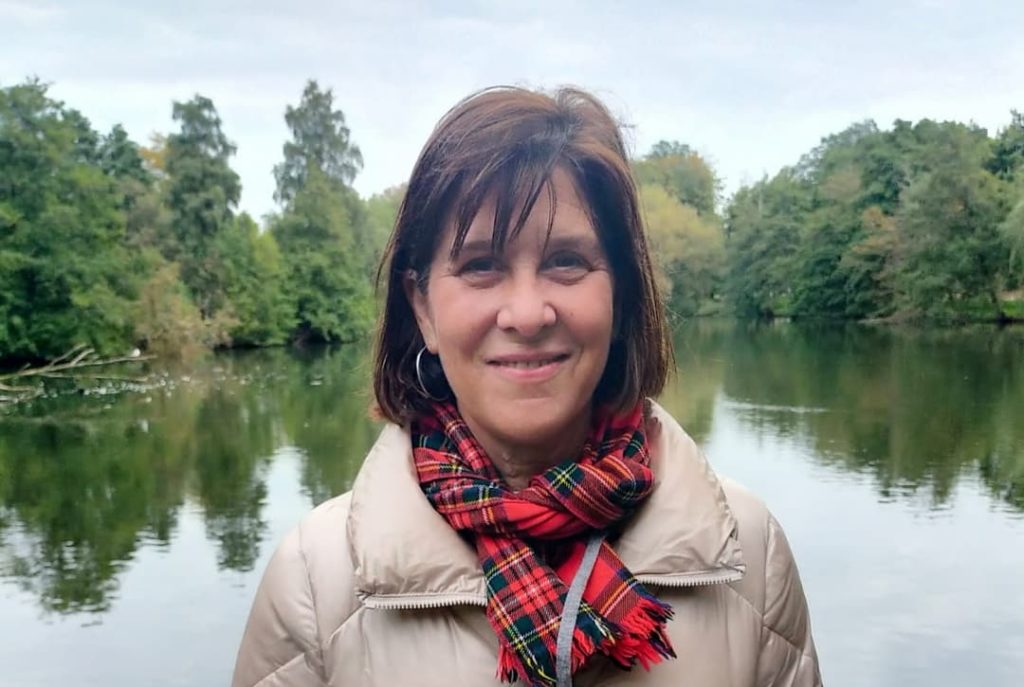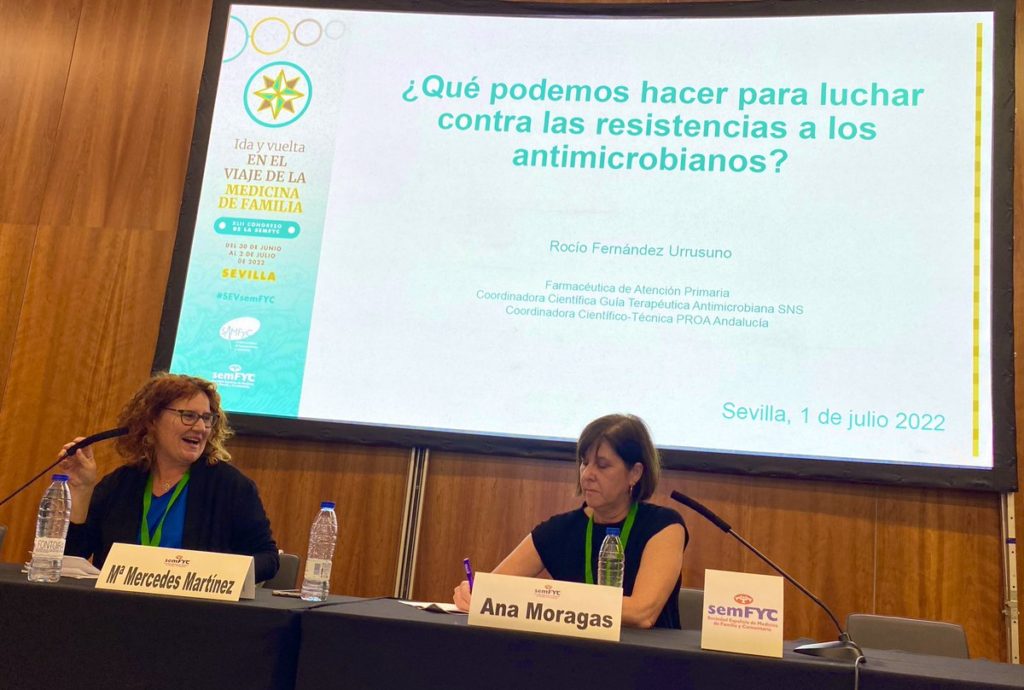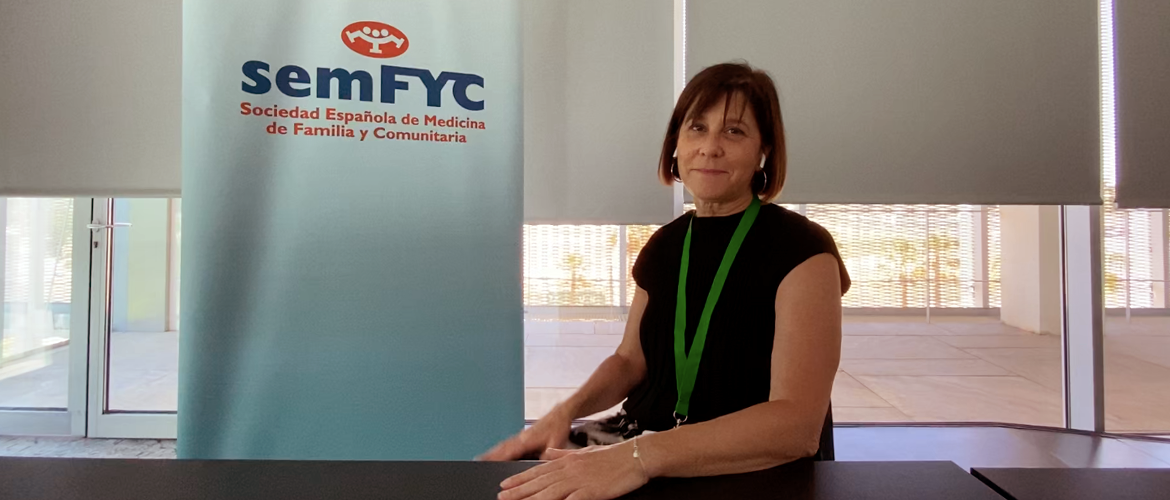Ana Moragas is a Family Doctor and a researcher in the field of Infectious Diseases. She is also working closely with HAPPY PATIENT as a member of both IDIAPJGol and semFYC. We had the chance to interview her before her presentation at the 42nd Spanish Conference which was held in Seville between the 30 June and 2 July.
Good morning Ana, what can you tell us about yourself?
My name is Ana Moragas, and I am a Family Doctor. I work at the Primary Health care center Jaume I of Tarragona, in Catalonia; I am a member of the Infectious Diseases Working Group (Grup de Malalties Infeccioses, GRIP) at the IDIAP Jordi Gol. We are focused on the Infectious disease field of research. One of our most important projects is HAPPY PATIENT.
HAPPY PATIENT is a European Funded project in which IDIAP is involved, as well as the Catalan Health Institute ICS and the Spanish Society of Family and Community Medicine (semFYC). We are all collaborating with several European partners, and our goal is to reduce the arbitrary prescription of antibiotics in 5 target European countries.
Can you tell us more a bit more about what you are doing in the project?
I’m one of the researchers in HAPPY PATIENT. I am a member of the team coordinating the whole project. I will also be helping with the entire training course aiming to engage family doctors and provide them with helpful communication tools and the latest available evidence. We are also conducting the audit and gathering data, both from the first audit and the second audit, which we will be starting next January.
One thing that makes this project so unique is the fact that it involves all levels of care. How are you managing the data collected until now, with more than 10.000 registered cases throughout the five target countries?
Yes, that makes HAPPY PATIENT unique. Our idea is that we will bring our research to Family Doctors, both those Family Doctors who work in Primary Care and Out-of-Hours services, those Healthcare professionals working in nursing homes, and the community pharmacists. The audit template we are using is quite different depending on the target group we are aiming to analyze, but all the templates will be analyzed together with all the countries.
What is the most ambitious challenge of HAPPY PATIENT?
The most ambitious challenge of HAPPY PATIENT is to decrease arbitrary prescription of antibiotics to reduce antimicrobial resistance in 5 target countries.
How did you chose the target countries for the project?
There is a global ranking with the doses of the daily antibiotics prescribed in a country. Those countries with the highest prescription numbers are France, Spain, Poland, and Greece. On the other side of the ranking, we find Lithuania, which has a shallow antibiotic prescription rate. We are using the Lithuanian example to see how to improve antibiotic prescription in the rest of the target countries.

HAPPY PATIENT highlights the significant differences in antibiotic prescription between countries, levels of care, and even within countries. As European Family Doctors/General Practitioners, what could we be doing do wrong?
There are lots of elements that need to be analyzed before answering this question. So far, we have seen that those countries in northern Europe present a much lower prescription rate than those from the south.
Perhaps southern countries prescribe more antibiotics because they lack rapid tests, whereas the nordic countries have more resources and therefore use more rapid testing techniques. In the countries of the south, we lack these techniques; consequently, our diagnosis is not as accurate as those carried out in Denmark, for example. In Southern Europe, we also have a much more collapsed system; therefore, we have less time per patient, and Family Doctors often can not cope with hectic schedules, so our diagnosis tend to be poorer. We have little time to dive into each patient’s reality. Also, our societies are different than those living in northern Europe, our patients are more used to ask for antibiotics; they ask for their usual prescription because they lack information.
It is interesting to see how, for instance, in the Netherlands, pharmacists play a much more active role and have a closer relationship with the patient. In contrast, the Family Doctor/General Practitioner takes the lead in other countries. What system works best?
In general terms, I would say collaboration is always better. In the case of Spain, we have just started working with community pharmacists, and there are several ongoing research projects, but we still have a long way to go. However, it is true that if community pharmacists can help us to provide the correct information to the general audience, probably they will understand better.
In the context of the COVID pandemic, nursing homes have been under the spotlight, especially in Catalonia and Spain. What can be improved from a Family Medicine perspective in this setting?
In the nursing homes, we are seeing a very worrying antibiotic overuse, and sometimes it looks like the healthcare professionals working in this setting have been left behind. Working with those health care professionals living in nursing homes will improve their way of prescribing.
What about Family Doctors? What can they do to help nursing homes professionals in deprescribing antibiotics?
Family Doctors are playing a much more critical role in nursing homes now than they used to do before the pandemic. Many Primary Care teams, led by Family Doctors, are now going to nursing homes and revising the overall prescription. Also, nurses play a crucial role. In most cases, they are not prescribers; however, they can influence and anticipate the need for antibiotics.
One of the main tasks that the consortium is currently carrying out is the creation of several communication tools: What is the biggest challenge?
These Communication Tools will meet different types of audiences, from patients to healthcare workers from other countries; therefore, we have to adapt the messages to each of these realities, taking into account not only the language, which we are also translating, but also the iconography, we believe the way these materials are labeled will have an impact. It is essential that patients feel that these materials are somehow personalized and directly aimed at them. We don’t want only to give a leaflet; we want to teach and disseminate all the work that has been carried out.
What do you expect from the presentation today?
The most important thing is to let people know we are working on that. Also, since most of the audience will be made of Family Doctors, I think it is crucial to let them know we are living in a pandemic. Antimicrobial Resistance, like COVID, is spreading everywhere in the world; sooner or later, it will blow up in our faces. I want to share a room for optimism; it is our common goal to work together if we are to stop antimicrobial resistance. For me, today’s challenge is to let people understand what antimicrobial resistance is, what we can do, how we can reduce antibiotics prescription, and that Family Doctors are critical players in deprescription.
There are a lot of young people at this conference. Do you expect it to be an exciting subject for them?
Indeed, I think antimicrobial resistance is a subject in which young people have more sensibility than older Family Doctors. If someone comes the HAPPY PATIENT presentation today and gets back home thinking that Antimicrobial resistance is essential, it would be the first step. Sometimes as Family Doctors, we tend to believe that this subject is not our responsibility; we tend to think that hospitals or veterinarians should deal with it, which is not quite true. Family Doctors play a crucial role.
Our partners from Greece told us at our first face-to-face meeting in Copenhagen how Greek pharmacists are becoming increasingly engaged with HAPPY PATIENT. Some even posted our leaflets and posters on the storefront so they would claim they are pioneers of deprescription.
Do you think this is likely to happen in Spain?
I would love to see that everybody who is participating in the project in Spain would eventually place a poster of the HAPPY PATIENT project as a sign of empowerment. I would be delighted. HAPPY PATIENT should be a quality sign, a logo representing scientific empowerment, and a European sense of belonging when facing AMR.
How difficult is it to coordinate international research projects?
In our case, you may say HAPPY PATIENT is an easy project. Still, it is very complicated because managing so many countries with many differences and priorities can be exhausting. For instance, the National Guidelines are very different. Also, the antibiotics are not the same; doctors don’t prescribe the same kind of antibiotic. To unify all that is very difficult, but it is lovely to see the whole consortium and all the partners working together.
What are the differences in clinical pathologies and types of infections between northern and southern European countries?
I don’t think there’s much difference between northern and southern countries. We all get infected by the same kind of bacteria, and our bodies have the same responses in the south as well as in the north. The main difference is the resources used to achieve a diagnosis. As I said, testing techniques are essential, and being equipped with fast tests is an advantage, as well as having more time to spend with each patient.
Should the Spanish Society of Family and Community Medicine claim for more rapid tests?
Yes, definitely. With the Antibiotic Use Optimization Programs (PROA programs) we have been doing efforts in this direction. Also, we have made basic tests such as Strep A available, it seems almost impossible, but some places in Spain did not have these basic testing techniques until recently. PCR is also an easy technique, and now we are not using them, only in research settings such as in HAPPY PATIENT.

What can nordic countries learn from southern countries regarding antimicrobial resistance?
That’s a tough one because there is so much more we can learn from nordic countries. I think they can learn communication techniques and how to improve their holistic view in their community settings. Also, our coordination skills. We are good at coordinating and creating a productive environment where science and research can flourish. We are now leading several international research projects and have the will to lead more. We are hardworking professionals. There’s no doubt about that.
Who will be doing the HAPPY PATIENT training?
The project stands upon 3 pillars. First, there’s a previous audit in which we fill several templates and the treatments we foresee for each of them. After that, we put these results in common, and we compare each of the countries and settings. That is interesting because we can see how are other countries doing and realize what can be improved in our own environments. Finally, there will be an online training course on how to improve communication techniques. We want to improve the interview procedure. Moreover, we are also very engaged with the dissemination, as HAPPY PATIENT must arrive to the general audience.
Actually, within the consortium, patients are also being represented. Why did you choose to include them in the consortium?
Patients are critical, because they are providing us with tones of information. We are also learning what they think about antibiotics and the reasons behind their requests, their misconceptions, and knowledge gaps. Also, when creating the communication materials, they have been helping us ensure the communication tools are also helpful.
Thank you very much, Ana, and best of luck.

